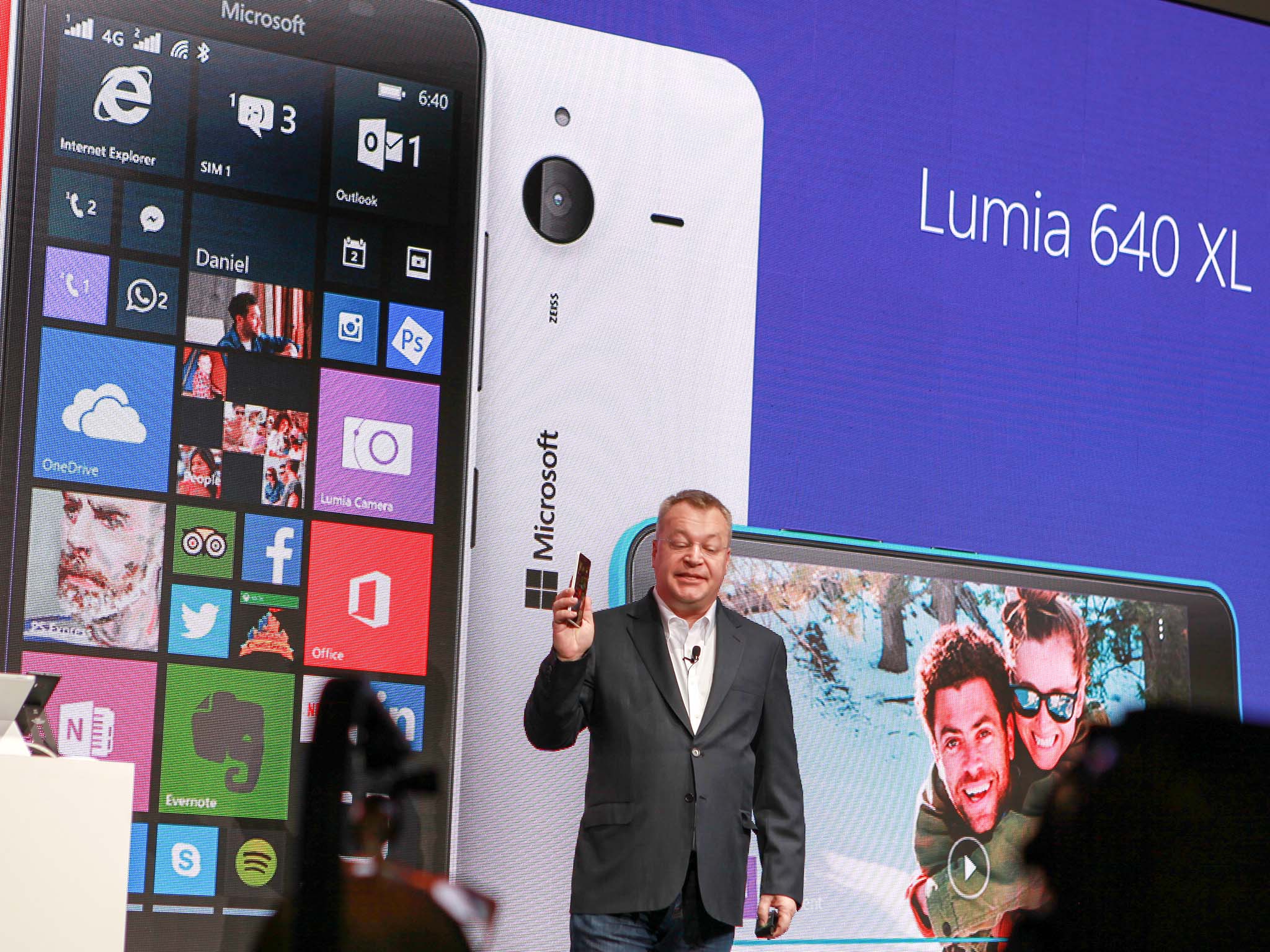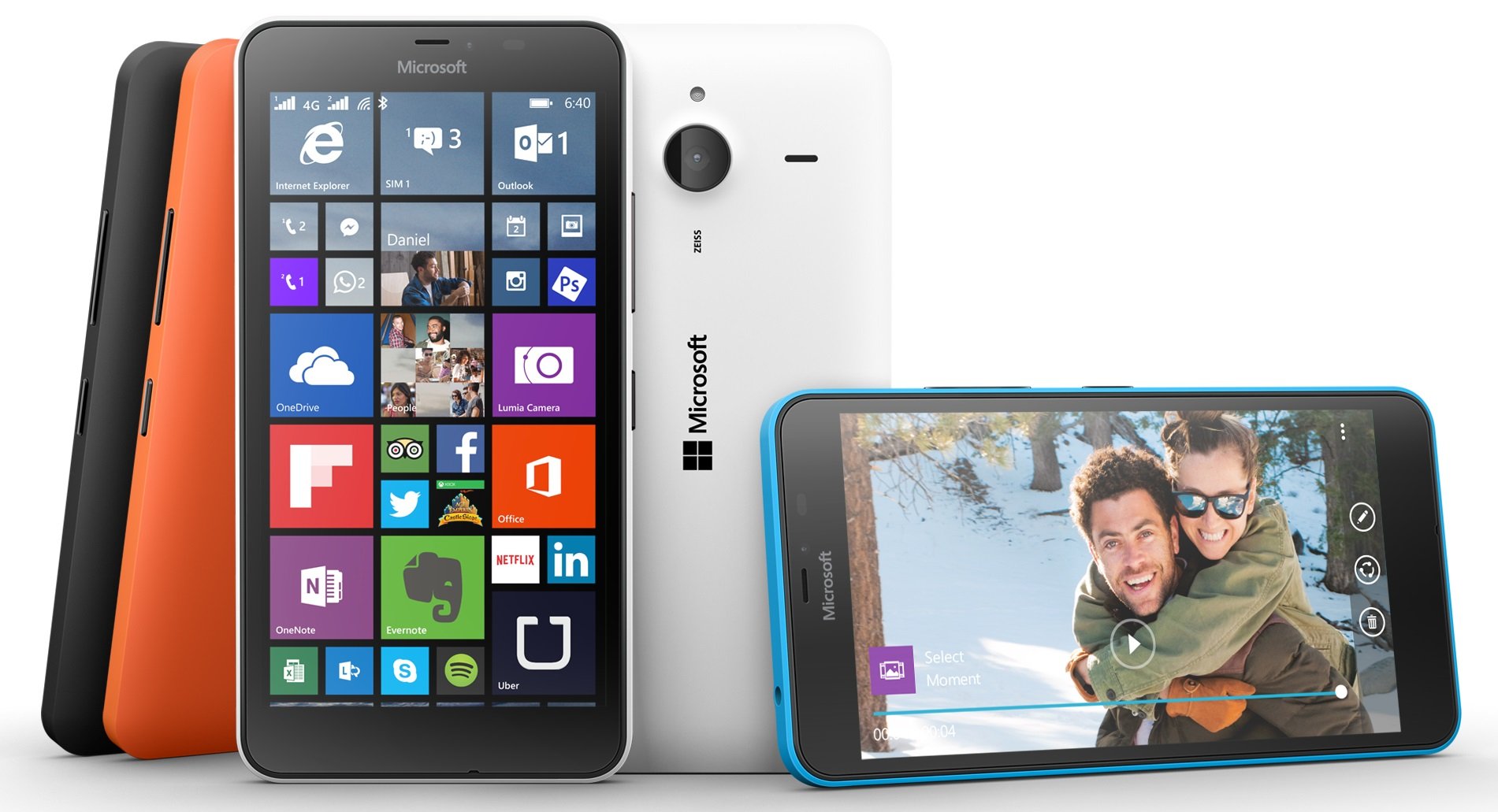My thoughts on the Lumia 640 and Lumia 640 XL and why this is a turning point for Microsoft
This morning, Microsoft has – as expected – unveiled two new Lumias for the Windows Phone line: the Lumia 640 and Lumia 640 XL.With the announcement of the Lumia 640 and Lumia 640 XL, Microsoft demonstrates it can handle Lumia hardware (and improve where Nokia failed)

Announcing mid-range phones during Mobile World Congress is almost routine now for Microsoft (Nokia), and this year's additions are not game changers by any means. They will also not quell the masses yearning for a new high-end Lumia Windows Phone, something we do not expect until later this year when Windows 10 is good and ready. Sorry, folks.
Still, I want to talk briefly about these phones and my time with them. In short, I like what I see, and I think Microsoft is paying attention.

Fixing the Lumia 630 and Lumia 635
In many ways, the Lumia 630 and Lumia 635 are great phones. Their design is stellar, their displays are surprisingly punchy and both devices even handle Windows 10 quite well.
Let's not beat around the bush though, Nokia dropped the ball on a few features, making both phones near hits, but not quite. For instance, both phones had these drawbacks:
- No Glance screen
- 512 MB of RAM, limiting performance and access to certain games on the Store
- No front-facing camera in the age of selfies and Skype
- A middling 5 MP rear camera with no flash
- Lower resolution display (854 x 480) at an antiquated 4.5-inch size
- No ambient light or proximity sensors
The Lumia 635 was tough to love despite Nokia getting so much right in the design.
The Lumia 640 by Microsoft though is a different story. Microsoft gets it. They understand what was holding back the Lumia 63x series, and they are looking to right the wrong, even though the Lumia 63x is hardly an old mid-range phone. Here is what the improved:
- Larger display at 5-inches
- Higher resolution (1280 x 720) HD display
- Glance screen
- Ambient light and proximity sensors are back
- 8 MP rear camera with Zeiss optics
- 1 MP front-facing camera
- 1 GB of RAM
Even with the camera, Microsoft is putting in Lumia Camera 5.0 with Dynamic Flash and built in HDR! Once you have used Lumia Camera 5.0 (now only on the Lumia 830, Lumia 930, Icon and Lumia 1520), you just cannot go back. Being able to use that on 6xx series device is quite awesome.
All the latest news, reviews, and guides for Windows and Xbox diehards.
Okay, some of you will argue that the Snapdragon 400 processor at 1.2 GHz is a bit 'old'. However, having played with this phone I think the performance is on par for its price range. In fact, I'm actually excited about this device, especially if I could run it on AT&T and T-Mobile, which reminds me…
Dual-SIM LTE. Finally!
Dual-SIM devices are usual in emerging markets, but here in the US they are rare. Moreover, when they appear here, they are only 3G, which is unacceptable for our networks these days. Dual-SIM LTE though opens up many new doors, even for those in the US looking for an affordable sub-$200 phone.
Is the Lumia 640 perfect? Probably not and we are sure to find flaws in our upcoming review. However, I feel good about this phone. In fact, I am quite confident I will end up using it on a second line due to that 5-inch display, which, let's be honest, really is the sweet spot these days.

Lumia 640 XL – New name with new improvements
I was never a big user of the Lumia 1320, even though I have one here with me. The reason is the Lumia 1520 was just a way better phone with LTE and being readily available for me on AT&T.
The Lumia 1320 in an intriguing device though. It is the only Lumia to feature a dual-core 1.7 GHz processor, which is kind of awesome. It also features a beautiful 6-inch 720 x 1280 display, had decent build quality and Glance Screen.
Still, that 5 MP rear camera was beyond terrible. It should have been at least 8 MP with Zeiss optics. The front-facing VGA 0.3 MP one was not much better. It was also a heavy sucker, at a whopping 220 grams.
Microsoft has now revisited the Lumia 1320 and instead of giving us a Lumia 1330, we are getting a Lumia 640 XL.
I like the new naming scheme. It makes sense (or at least more sense). The Lumia 1320 was confusing to many because it was "higher" than the Lumia 9xx or Lumia 1020 series, yet it was far behind in terms of hardware. I get what Nokia was trying for but in the end, it was just too much.
Microsoft is doing the right thing. Merge these classes, including the 3G/LTE distinction (no more Lumia 630 or Lumia 635 division) and focus on the core hardware similarities. The 'XL' nomenclature conveys just that: extra-large. Not just the display, either, but in some other hardware aspects.
Now, the Lumia 640 XL is lighter at 170 grams (versus 220, which is a big difference). It has a slightly smaller display (6-inches is pushing it for many) and a so much better cameras at 13 MP in the rear and a hefty 5 MP in the front.
Some users will lament the "downgrade" in CPU from a dual-core 1.7 GHz to a quad-core 1.2 GHz system, but I am not completely convinced the performance will be degraded. Either way, I think the camera improvement is the bigger story here and the Lumia 640 XL, especially the dual-SIM LTE version, looks to be an interesting device.
Wait and see
I should point out that we still need to review these devices, so this is more of an initial thoughts article. If I sound over enthusiastic, that is why.
I think Microsoft though is listening to users on what they want and what they don't want, and it shows with these devices. You could argue that they could let the Lumia 63x series ride a bit longer on the market. After all, the Lumia 635 is being bumped to 1 GB of RAM in some countries (yes, this is true). However, budget devices are Microsoft's high point right now for Windows Phone, so they should get it right by releasing the most perfect hardware at the lowest price-point for this range.
So far, I think they are succeeding, and I like what I see. Now let's see how customers feel about them.

Daniel Rubino is the Editor-in-chief of Windows Central. He is also the head reviewer, podcast co-host, and analyst. He has been covering Microsoft since 2007 when this site was called WMExperts (and later Windows Phone Central). His interests include Windows, laptops, next-gen computing, and wearable tech. He has reviewed laptops for over 10 years and is particularly fond of 2-in-1 convertibles, Arm64 processors, new form factors, and thin-and-light PCs. Before all this tech stuff, he worked on a Ph.D. in linguistics, performed polysomnographs in NYC, and was a motion-picture operator for 17 years.
